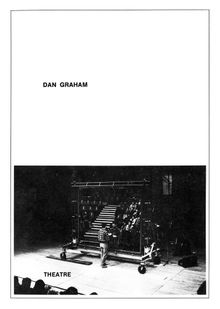| |||||||||||||||||||||||||
ARTIST MONOGRAPHS
|
|
in stock $16.00 Free Shipping UPS GROUND IN THE CONTINENTAL U.S. |
 Dan Graham: Don’t Trust Anyone Over Thirty
Dan Graham: Don’t Trust Anyone Over Thirty
An Entertainment by Dan Graham
Published by Walther König, Köln.
Don’t Trust Anyone Over Thirty is a satiric entertainment continuing Dan Graham's (born 1942) cultural analysis of the ’60s, which began with his 1981 video "Rock My Religion.” Don't Trust (the DVD of which is included here) is set in the period when hippies moved their counterculture to the countryside.
PUBLISHER
Walther König, Köln
BOOK FORMAT
Paperback, 11.25 x 8.5 in. / 108 pgs / 103 color.
PUBLISHING STATUS
Pub Date 10/8/2019
Active
DISTRIBUTION
D.A.P. Exclusive
Catalog: FALL 2019 p. 194
PRODUCT DETAILS
ISBN 9783863351977 FLAT40
List Price: $35.00 CAD $39.95
AVAILABILITY
In stock
in stock $35.00 Free Shipping UPS GROUND IN THE CONTINENTAL U.S. |
 Dan Graham: Two-Way Mirror Cylinder Inside Cube and a Video Salon
Dan Graham: Two-Way Mirror Cylinder Inside Cube and a Video Salon
Published by Dia Art Foundation.
Text by Dan Graham.
PUBLISHER
Dia Art Foundation
BOOK FORMAT
DVD (NTSC), 4 x 7.25 in. / 56 pgs / 41 bw.
PUBLISHING STATUS
Pub Date 8/22/2017
Active
DISTRIBUTION
D.A.P. Exclusive
Catalog: SPRING 2017 p. 156
PRODUCT DETAILS
ISBN 9780944521830 FLAT40
List Price: $19.95 CAD $27.95 GBP £18.99
AVAILABILITY
Out of stock
STATUS: Out of stock Temporarily out of stock pending additional inventory. |
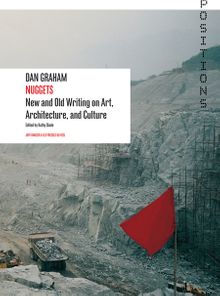 Nuggets
Nuggets
New and Old Writing on Art, Architecture, and Culture
Published by JRP|Ringier.
By Dan Graham. Edited by Kathy Slade.
PUBLISHER
JRP|Ringier
BOOK FORMAT
Paperback, 6 x 8.25 in. / 240 pgs / 10 bw.
PUBLISHING STATUS
Pub Date 3/31/2014
Active
DISTRIBUTION
D.A.P. Exclusive
Catalog: FALL 2013 p. 149
PRODUCT DETAILS
ISBN 9783037641989 TRADE
List Price: $29.95 CAD $39.95 GBP £12.95
AVAILABILITY
In stock
in stock $29.95 Free Shipping UPS GROUND IN THE CONTINENTAL U.S. |
 Architecture/Astrology
Architecture/Astrology
By Dan Graham and Jessica Russell.
Published by Koenig Books.
Illustrations by Meiko Meguro.
PUBLISHER
Koenig Books
BOOK FORMAT
Clth, 4.75 x 6 in. / 60 pgs / 30 color.
PUBLISHING STATUS
Pub Date 10/31/2014
Active
DISTRIBUTION
D.A.P. Exclusive
Catalog: SPRING 2015 p. 174
PRODUCT DETAILS
ISBN 9783863355449 FLAT40
List Price: $39.95 CAD $53.95
AVAILABILITY
Out of stock
STATUS: Out of stock Temporarily out of stock pending additional inventory. |
 Hans Ulrich Obrist & Dan Graham: Conversation Series
Hans Ulrich Obrist & Dan Graham: Conversation Series
Volume 25
Published by Walther König, Köln.
Edited by Hans Ulrich Obrist.
PUBLISHER
Walther König, Köln
BOOK FORMAT
Paperback, 5.5 x 8.5 in. / 134 pgs.
PUBLISHING STATUS
Pub Date 3/31/2012
Out of stock indefinitely
DISTRIBUTION
D.A.P. Exclusive
Catalog: FALL 2011 p. 106
PRODUCT DETAILS
ISBN 9783865607911 TRADE
List Price: $25.00 CAD $34.50
AVAILABILITY
Not available
STATUS: Out of stock indefinitely. |
 Dan Graham: Not Yet Realised, Pavilion Drawings
Dan Graham: Not Yet Realised, Pavilion Drawings
Published by Lisson Gallery.
Edited by Dorothy Feaver. Text by Brian Hatton.
PUBLISHER
Lisson Gallery
BOOK FORMAT
Paperback, 6.75 x 8.5 in. / 94 pgs / 52 color / 25 bw.
PUBLISHING STATUS
Pub Date 12/31/2012
Active
DISTRIBUTION
D.A.P. Exclusive
Catalog: SPRING 2013 p. 125
PRODUCT DETAILS
ISBN 9780947830335 TRADE
List Price: $29.99 CAD $40.00 GBP £20.00
AVAILABILITY
Out of stock
STATUS: Out of stock Temporarily out of stock pending additional inventory. |
 Dan Graham Video - Architecture - Television
Dan Graham Video - Architecture - Television
Writings on Video and Video Works 1970-1978
Published by Lars Müller Publishers.
Edited by Benjamin H. D. Buchloh.
This title, published in 1979 and long since out of print, now appears as a reprint from Lars Müller Publishers. The original book was released in the series of publications Source Materials of the Contemporary Arts initiated by Kasper König and produced by the Press of the Nova Scotia College of Art and Design. The publication represents an important document in Dan Graham’s artistic examination of the video medium. Graham’s installations and performances with video from the years 1970–78 are documented with numerous illustrations, photos, and brief descriptions. In addition, the volume contains an essay by the artist in which he examines the various possibilities and forms of representation offered by the video medium, and draws the boundaries between these and representational spaces in television, film, or architecture.The book also offers contributions by Michael Asher and Dara Birnbaum, as well as an annex with a biography and bibliography.
Dan Graham, born in Urbana, Illinois, in 1942, is one of the most renowned contemporary artists. His work often focuses on cultural phenomena, incorporating materials as diverse as photography, video, performance, glass, and mirror structures. Dan Graham lives and works in New York.
PUBLISHER
Lars Müller Publishers
BOOK FORMAT
Paperback, 8.25 x 11 in. / 96 pgs / 113 images.
PUBLISHING STATUS
Pub Date 11/25/2012
Active
DISTRIBUTION
D.A.P. Exclusive
Catalog: Publisher Backlist
PRODUCT DETAILS
ISBN 9783037783009 TRADE
List Price: $50.00 CAD $67.50
AVAILABILITY
In stock
in stock $50.00 Free Shipping UPS GROUND IN THE CONTINENTAL U.S. |
 Dan Graham's New Jersey
Dan Graham's New Jersey
Published by Lars Müller Publishers.
By Dan Graham.
Dan Graham, one of America’s most important contemporary artists, is best known today for his sculptural works and installations. His photographic works are generally not so well known, despite the fact that he first became famous for his photographic series, Homes for America, pictures of typical American suburbia in New Jersey. To this day the theme of architecture and its surfaces represents an extremely important facet of his work, as does the question of what role it plays in postmodern society and in the context of everyday culture. This publication presents new photographs by Dan Graham, taken in the context of a study trip with the architecture faculty of Columbia University, together with a selection of original photographs from the Homes for America series. The new images exhibit stark similarities to the old pictures, because they were taken in the same locations, in the same deserts of suburban streets and housing that Graham had photographed in the 1960s. This creates a fascinating reference system of repetitions and differences, in terms of both the temporal and the spatial, that asks questions of the viewer about architecture, public space, and their function in society.
PUBLISHER
Lars Müller Publishers
BOOK FORMAT
Hardcover, 10.25 x 7.5 in. / 192 pgs / 140 images.
PUBLISHING STATUS
Pub Date 2/27/2012
Active
DISTRIBUTION
D.A.P. Exclusive
Catalog: Publisher Backlist
PRODUCT DETAILS
ISBN 9783037782590 TRADE
List Price: $50.00 CAD $75.00
AVAILABILITY
In stock
in stock $50.00 Free Shipping UPS GROUND IN THE CONTINENTAL U.S. |
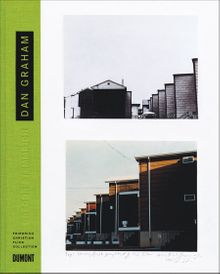 Dan Graham: Collector’s Choice Vol. 8
Dan Graham: Collector’s Choice Vol. 8
Published by DuMont.
Text by Gregor Stemmrich.
PUBLISHER
DuMont
BOOK FORMAT
Hardcover, 9.25 x 11.5 in. / 200 pgs / 99 color / 89 bw.
PUBLISHING STATUS
Pub Date 2/28/2010
Out of stock indefinitely
DISTRIBUTION
D.A.P. Exclusive
Catalog: SPRING 2010 p. 77
PRODUCT DETAILS
ISBN 9783832191115 TRADE
List Price: $59.95 CAD $79.00
AVAILABILITY
Not available
STATUS: Out of stock indefinitely. |
 Dan Graham: Rock/Music Writings
Dan Graham: Rock/Music Writings
Published by Primary Information.
PUBLISHER
Primary Information
BOOK FORMAT
Paperback, 5.5 x 8.25 in. / 224 pgs / 29 bw.
PUBLISHING STATUS
Pub Date 9/30/2009
Out of stock indefinitely
DISTRIBUTION
D.A.P. Exclusive
Catalog: SPRING 2010 p. 77
PRODUCT DETAILS
ISBN 9780978869731 TRADE
List Price: $18.00 CAD $25.50
AVAILABILITY
Not available
STATUS: Out of stock indefinitely. |
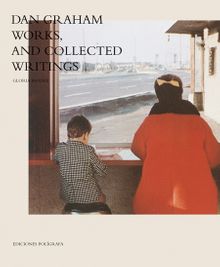 Dan Graham: Works, and Collected Writings
Dan Graham: Works, and Collected Writings
Published by Ediciones Polígrafa.
Text by Gloria Moure.
PUBLISHER
Ediciones Polígrafa
BOOK FORMAT
Hardcover, 8.25 x 10.25 in. / 295 pgs / 215 color.
PUBLISHING STATUS
Pub Date 6/30/2009
Out of print
DISTRIBUTION
D.A.P. Exclusive
Catalog: SPRING 2009 p. 59
PRODUCT DETAILS
ISBN 9788434312012 TRADE
List Price: $75.00 CAD $90.00
AVAILABILITY
Not available
STATUS: Out of print | 00/00/00 For assistance locating a copy, please see our list of recommended out of print specialists |
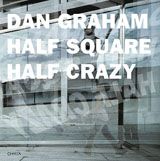 Dan Graham: Half Square Half Crazy
Dan Graham: Half Square Half Crazy
Published by Charta.
Essays by Adachiara Zevi and Pietro Valle.
PUBLISHER
Charta
BOOK FORMAT
Hardcover, 11 x 11 in. / 80 pgs / 23 color / 12 bw / 1 duotone.
PUBLISHING STATUS
Pub Date 9/15/2005
No longer our product
DISTRIBUTION
D.A.P. Exclusive
Catalog: FALL 2005 p. 142
PRODUCT DETAILS
ISBN 9788881585205 TRADE
List Price: $40.00 CAD $50.00
AVAILABILITY
Not available
 Dan Graham
Dan Graham
Published by Ediciones Polígrafa.
Essays by Alexander Alberro, Dan Graham, Friedrich Wolfram Heubach, Brian Hatton, Mark Francis, Gloria Moure, Christine van Assche and Adachiara Zevi.
PUBLISHER
Ediciones Polígrafa
BOOK FORMAT
Paperback, 8.5 x 11 in. / 172 pgs / 40 color.
PUBLISHING STATUS
Pub Date 4/2/2001
Out of print
DISTRIBUTION
D.A.P. Exclusive
Catalog: FALL 2001
PRODUCT DETAILS
ISBN 9788434308701 TRADE
List Price: $50.00 CAD $60.00
AVAILABILITY
Not available
STATUS: Out of print | 11/25/2008 For assistance locating a copy, please see our list of recommended out of print specialists |
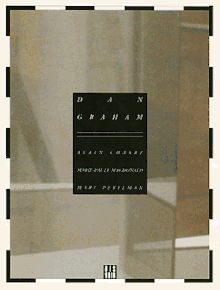 Dan Graham
Dan Graham
Published by Dis Voir.
Artwork by Dan Graham. Contributions by Jacinto Lageira, Marc Perelman, Alain Charre.
PUBLISHER
Dis Voir
BOOK FORMAT
Paperback, 6.5 x 8.5 in. / 128 pgs / 16 color.
PUBLISHING STATUS
Pub Date 9/2/1995
Active
DISTRIBUTION
D.A.P. Exclusive
Catalog: SPRING 1995
PRODUCT DETAILS
ISBN 9782906571426 TRADE
List Price: $28.50 CAD $39.00
AVAILABILITY
Out of stock
STATUS: Out of stock Temporarily out of stock pending additional inventory. |
